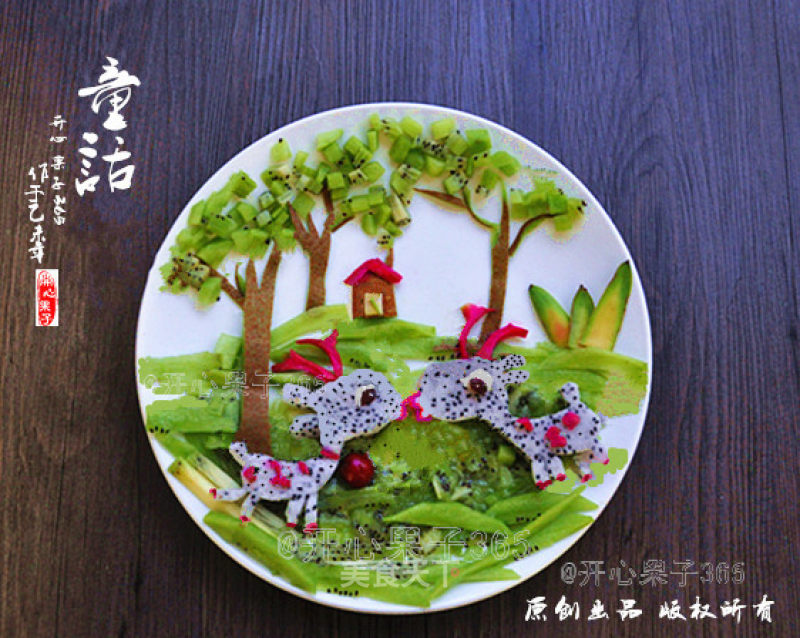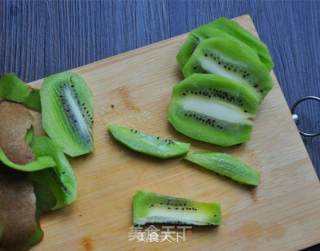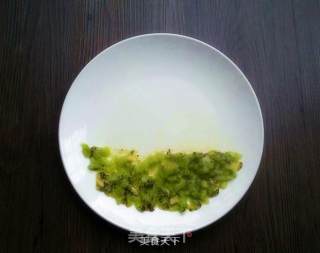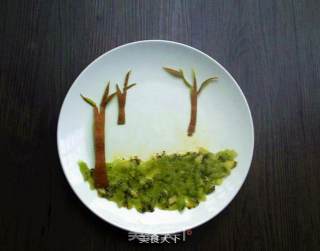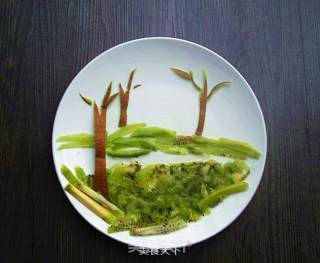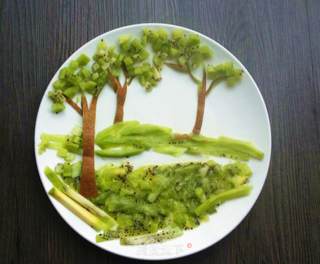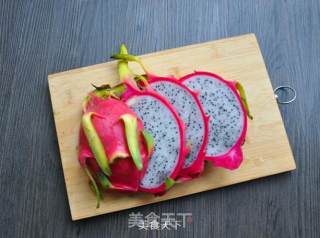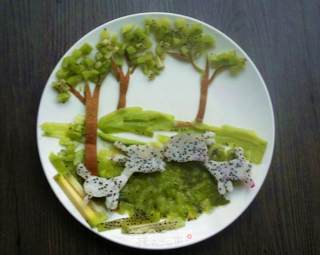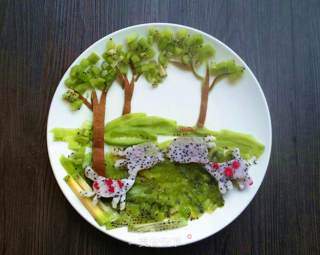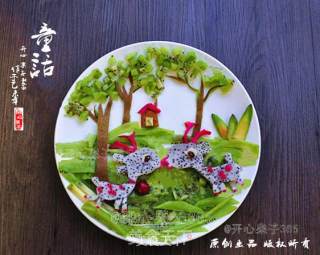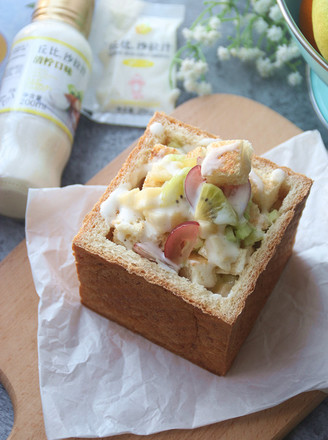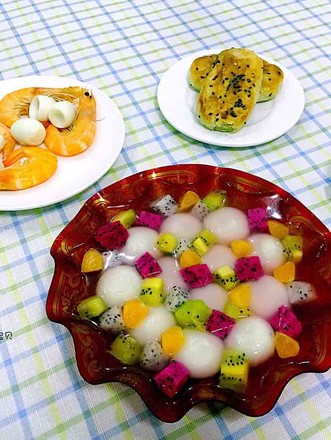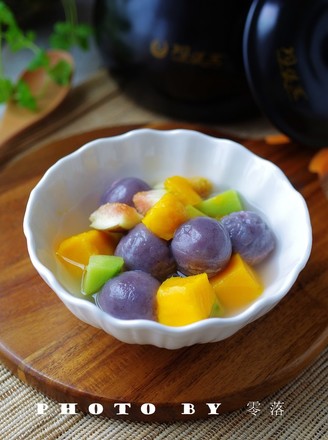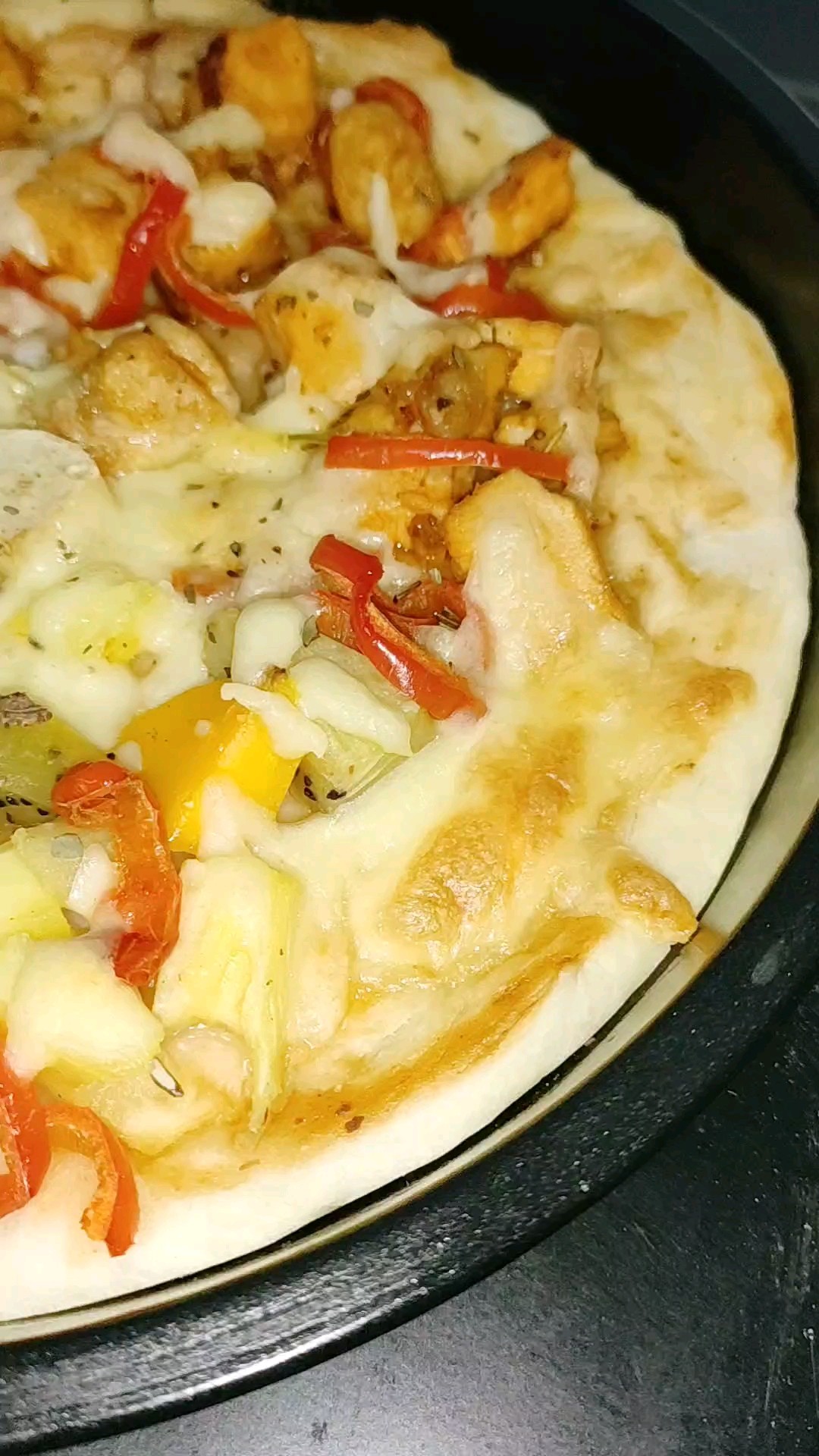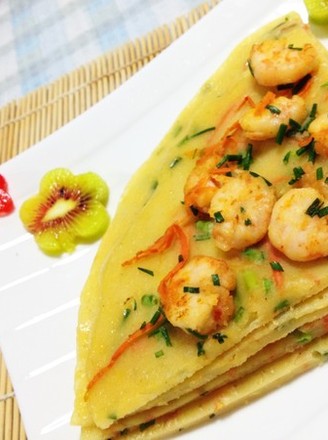Creative Fruit Platter-fairy Tale
1.
Wash the kiwi fruit, one of which is sliced and diced, half is diced, and half is diced
2.
Spread the diced kiwi fruit evenly on the bottom of the plate to make a green grass. Note that the diced diced fruit without seeds can be placed in one place.
3.
Another kiwi fruit is sliced vertically without peeling, and then divided into a trunk shape, and small twigs are cut out to form the trunk of the tree
4.
Take a part of the remaining kiwi fruit, peel and cut into slices or strips to put together on the ground, filling the large blank area
5.
The diced kiwi is spread on the trunk to make the treetop
6.
Cut the dragon fruit vertically and cut into several pieces for later use
7.
Use a knife to draw the small animal shape you like on the two largest pitaya slices in the middle. Those who don’t know how to cut the pattern directly, you can draw the pattern on paper and cut it out, and then place it on the top of the pitaya slice. Just cut with the edge of the paper
8.
The bright purple-red pitahaya peel is a good thing. The decoration is up to her. It is absolutely great to cut the skin into small pieces and embellish the markings on the small animals. Don't forget to make up the burned legs!
9.
Take a cherry to make a bell on the neck of a small animal, cut the skin into deer antlers, use melon skin to make the eyes white, and use other fruit seeds to make eyeballs. If you look at what is missing in the background, use the remaining kiwi and dragon fruit materials. Make up. Ha, two cute little animals who were playing with each other came out, and the beautiful fairy tales were on the plate. Look, who said that plates can only be used to serve dishes?
Tips:
1. Fruit materials are not limited, you can be creative according to the fruit ingredients you like
2. Those who don’t know how to cut the pattern directly, you can draw the pattern on the paper and cut it out, and then put it on the dragon fruit slice and cut along the edge of the paper.
3. Don't throw away every part of the fruit, especially the skin and core, as the final decoration is often indispensable for the finishing touch.

